
Summary
- Nvidia unveils DLSS 4 at CES 2025 for GeForce RTX 50 Series GPUs, introducing Multi Frame Generation for 8X performance boost.
- DLSS 4 combines AI models to generate additional frames efficiently, reduce VRAM usage by 30%, and improve image quality with transformer-based AI.
- DLSS 4 will be backward compatible with 75 games supporting Multi Frame Generation and over 50 titles integrating transformer-based models at launch.
At the Consumer Electronics Show (CES) 2025, Nvidia is poised to reshape gaming experience and graphics with the debut of DLSS 4. This cutting-edge development in Nvidia’s Deep Learning Super-Sampling (DLSS) collection introduces Multi Frame Generation, a revolutionary technology that will only be available on the new GeForce RTX 50 Series GPUs and laptops.
Nvidia’s Deep Learning Super Sampling (DLSS) is an advanced technology powered by AI that boosts gaming performance and visual quality. By employing Tensor Cores on GeForce RTX graphics cards, it increases the resolution of lower-quality images, resulting in clearer images and smoother gameplay, all while minimizing hardware strain. First introduced about six years ago, DLSS has consistently advanced to raise the bar for graphical realism and frame rate efficiency, transforming the way games are rendered.
At CES 2025, Nvidia showcased the next generation of Deep Learning Super-Sampling (DLSS), specifically DLSS 4, designed exclusively for GeForce RTX 50 Series GPUs. This new version introduces Multi Frame Generation, a cutting-edge feature that can create up to three extra frames for every standard frame rendered. Nvidia claims this update offers up to 8 times the performance, allowing gamers to play at 4K resolution with 240 frames per second and full ray tracing. Moreover, DLSS 4 incorporates real-time usage of transformer-based AI models in graphics for the first time, promising better image quality, increased temporal stability, and a reduction in visual artifacts.
GeForce RTX 50 Series Unveils DLSS Multi Frame Generation
Multi Frame Generation is a method that combines advancements in both hardware and software to efficiently boost performance. New AI models speed up frame generation by 40% and consume 30% less VRAM, while optimizing rendering processes to minimize computational costs. Features such as hardware Flip Metering and updated Tensor Cores ensure smooth frame delivery at high resolutions. Games like Warhammer 40,000: Darktide have shown faster frame rates and reduced memory usage with these enhancements. DLSS 4 also incorporates advanced features like Ray Reconstruction and Super Resolution, utilizing vision transformers to create intricate, stable visuals, particularly in graphically demanding ray-traced scenes.
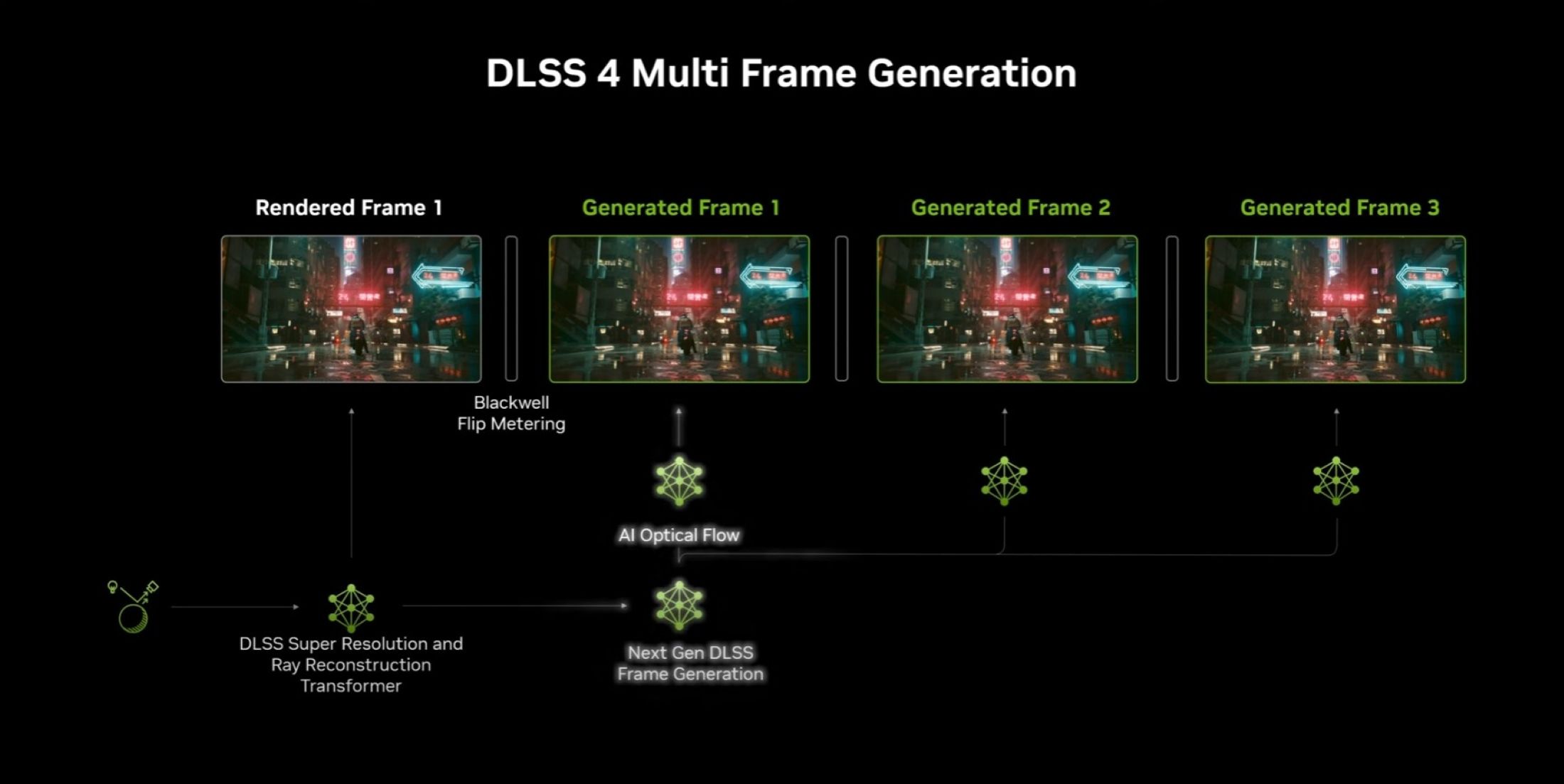
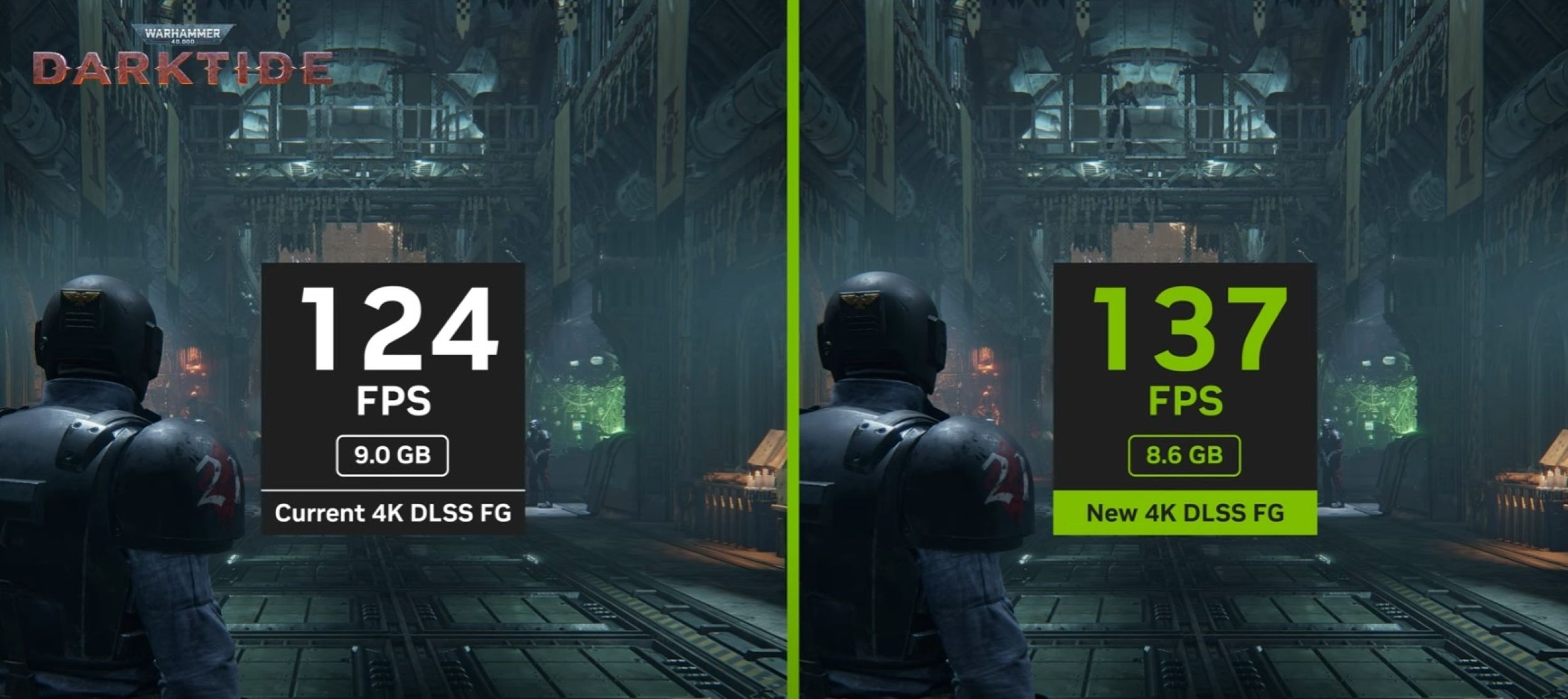
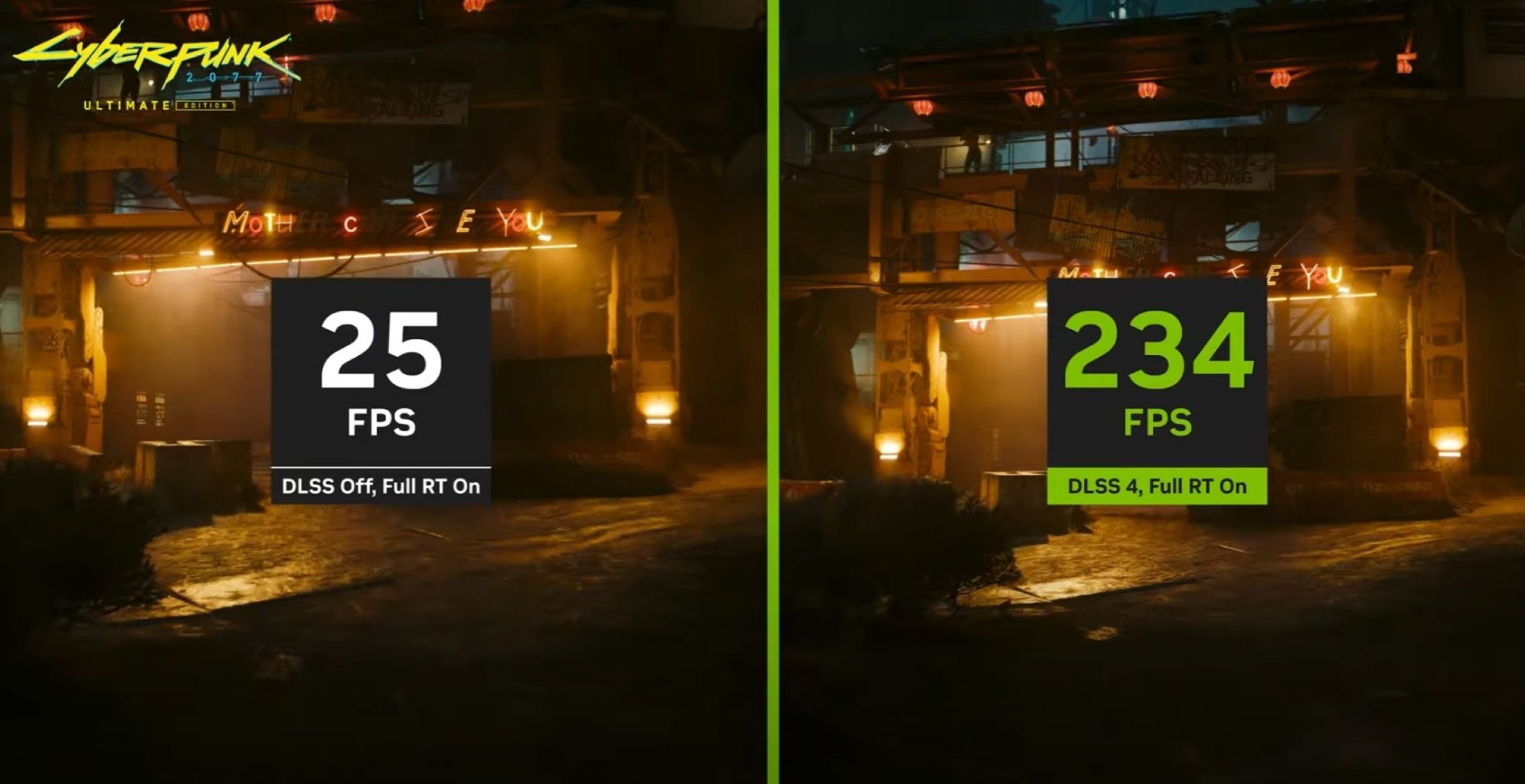
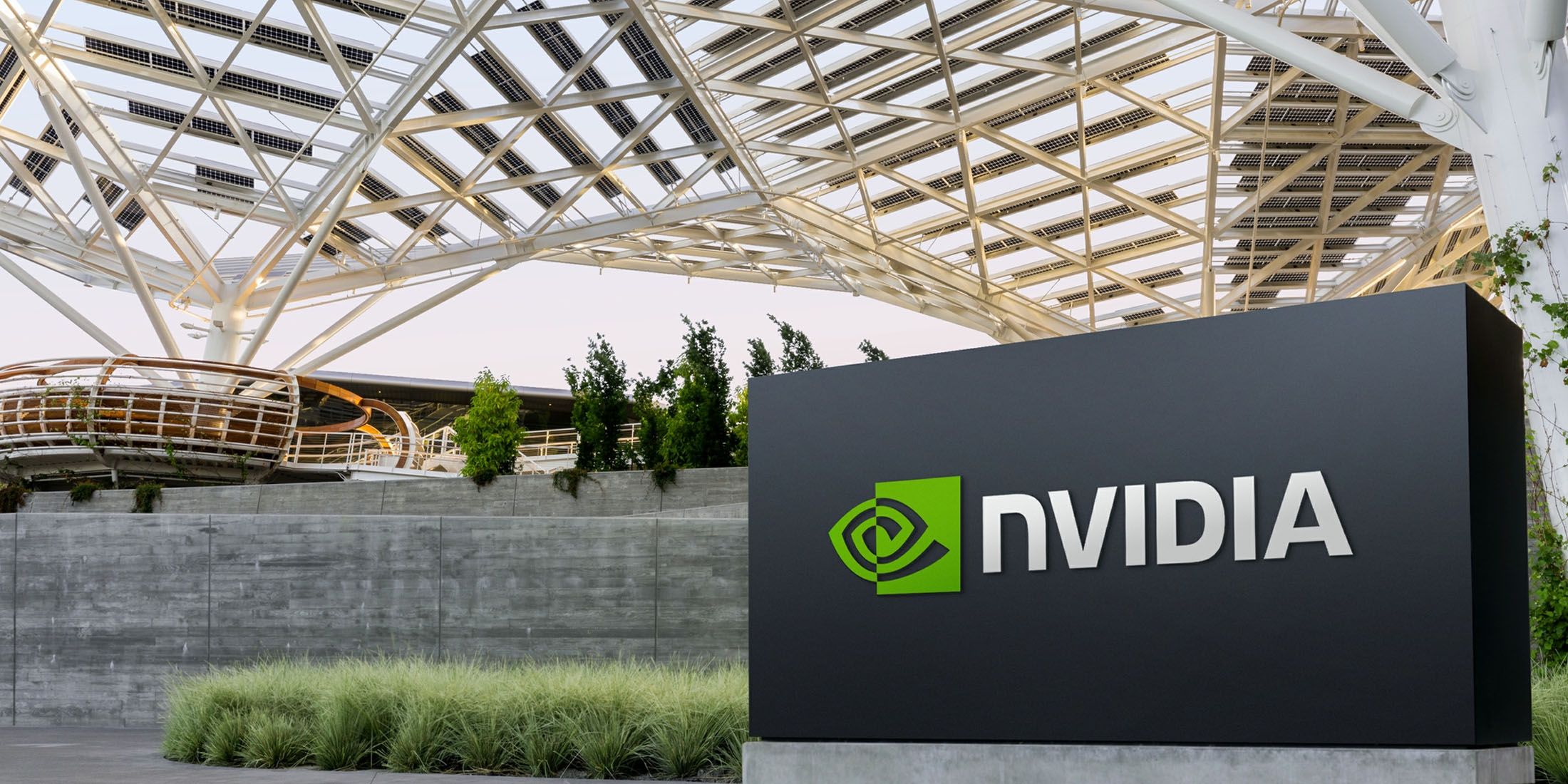
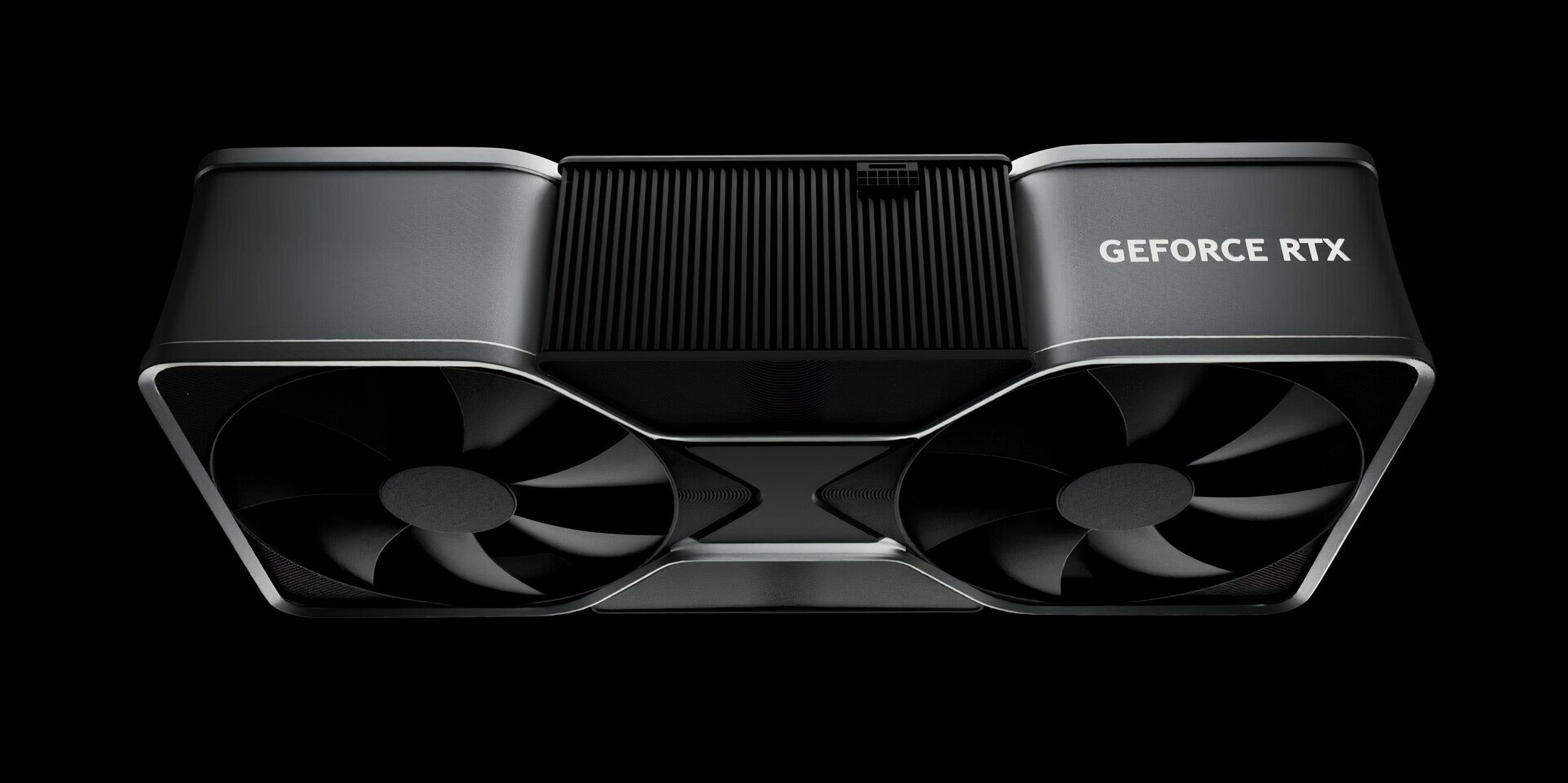
The significant updates of DLSS 4 are backward-compatible, meaning both current and future RTX users can take advantage of its improvements. At its release, around 75 games and apps will be compatible with Multi Frame Generation, while over 50 titles will incorporate the new transformer-based models. Popular games such as “Cyberpunk 2077” and “Alan Wake 2” will have native support for DLSS 4, with additional games to follow. For older DLSS integrations, Nvidia’s app comes equipped with an Override feature to activate Multi Frame Generation and other enhancements. This extensive upgrade cements Nvidia DLSS as a pioneer in gaming innovation, offering exceptional performance and visual quality for all GeForce RTX gamers.
Read More
- 6 Best Mechs for Beginners in Mecha Break to Dominate Matches!
- Esil Radiru: The Demon Princess Who Betrayed Her Clan for Jinwoo!
- Unleash Willow’s Power: The Ultimate Build for Reverse: 1999!
- Unlock the Ultimate Armor Sets in Kingdom Come: Deliverance 2!
- How to Reach 80,000M in Dead Rails
- Eiichiro Oda: One Piece Creator Ranks 7th Among Best-Selling Authors Ever
- T PREDICTION. T cryptocurrency
- One Piece 1142 Spoilers: Loki Unleashes Chaos While Holy Knights Strike!
- EUR HUF PREDICTION
- Top 5 Swords in Kingdom Come Deliverance 2
2025-01-07 11:44